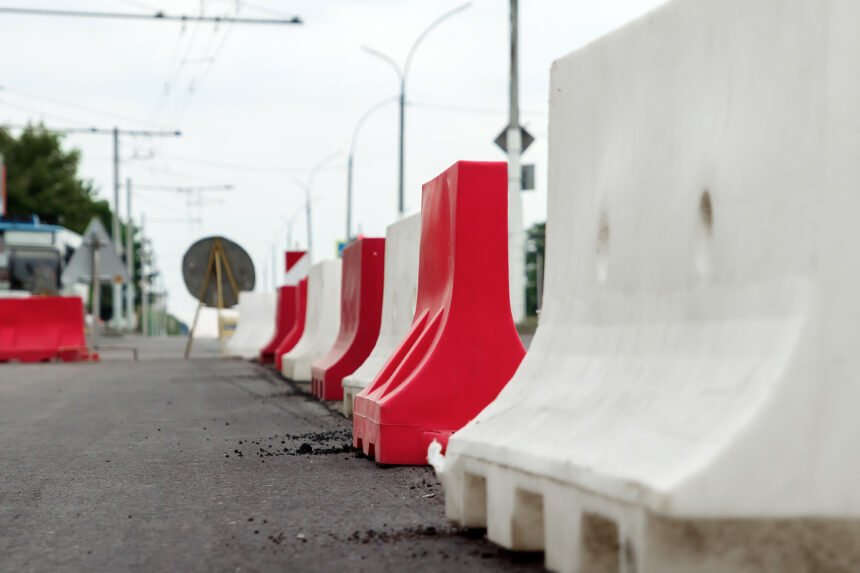Concrete barriers are essential in various construction and industrial sites and crucial in safety, traffic control, and perimeter security.
With so many options available, choosing the proper concrete barriers for hire for your needs requires careful consideration of site conditions, intended usage, and specific safety requirements. This guide will help you navigate the decision-making process.
Understand the Purpose of Your Barriers
The first step in selecting the right concrete barriers is understanding their intended purpose. Concrete barriers are used for several applications, including:
- Traffic Management: Directing traffic flow and reducing the risk of accidents on highways, roads, or construction zones.
- Security: Creating secure perimeters around sensitive areas or hazardous sites.
- Pedestrian Safety: Protecting pedestrians from potential hazards such as vehicle traffic or construction work.
- Temporary or Permanent Use: Some barriers are designed for temporary use, while others are installed permanently.
By determining the specific function of the barriers, you can narrow down the types that will best meet your needs.
Consider the Size and Weight
Concrete barriers come in various sizes and weights, which affect their stability, mobility, and effectiveness. Large, heavy barriers provide greater resistance against impacts, making them suitable for high-risk zones like highways or security-sensitive areas. However, these barriers may require specialized equipment for installation and movement.
If your site requires frequent adjustments or you need barriers that are easy to transport and install, lighter or modular options may be more appropriate. Because of their portability, temporary barriers, such as Jersey barriers, are commonly used in road construction.
Assess the Impact Rating
Choosing barriers with appropriate impact ratings is essential for sites where vehicle impact is a concern. Many concrete barriers are crash-tested and certified to withstand specific levels of force from vehicle collisions. Impact-rated barriers are often categorized by how well they can stop or redirect vehicles, which can be a critical factor in high-traffic or high-speed areas.
Check the crash-test ratings to ensure that the barriers you select meet the safety requirements for your site. In construction zones, for example, barriers designed to minimize vehicle and worker damage are typically required.
Evaluate Durability and Weather Resistance
Concrete barriers are exposed to a wide range of environmental conditions, so durability is a key consideration. Look for barriers made from high-quality concrete that can withstand the elements, including rain, extreme temperatures, and chemical exposure. In coastal or industrial areas, where corrosion could be a concern, barriers with additional protective coatings or reinforcement may be necessary.
If your site is in a region with extreme weather, you should also consider barriers that have been tested for weather resistance. Durable barriers reduce the need for frequent replacements, saving both time and money.
Explore Customization Options
Many manufacturers offer customization options for concrete barriers, allowing you to tailor them to your site’s specific needs. Customizations can include:
- Reflective Strips or Paint: For increased visibility, especially in low-light conditions.
- Lifting Anchors: For easier transportation and positioning.
- Linking Mechanisms: To connect barriers and form a continuous line for enhanced protection.
If your project requires specific branding or aesthetic considerations, some companies also offer colored or patterned finishes.
Compliance with Local Regulations
Before selecting concrete barriers, ensure that they comply with local safety regulations and guidelines. Different regions may have specific requirements regarding the types of barriers used in construction zones or high-traffic areas. Non-compliance can lead to fines, delays, or even safety hazards, so it’s crucial to research and adhere to these standards.
Conclusion
Choosing the right concrete barriers for your site involves evaluating several factors, including purpose, size, impact rating, durability, and customization. By carefully assessing your site’s unique requirements and understanding the options available, you can select barriers that provide optimal safety, efficiency, and compliance. Whether you’re managing traffic, securing a perimeter, or protecting pedestrians, the right concrete barriers will be vital to your site’s overall safety plan.






